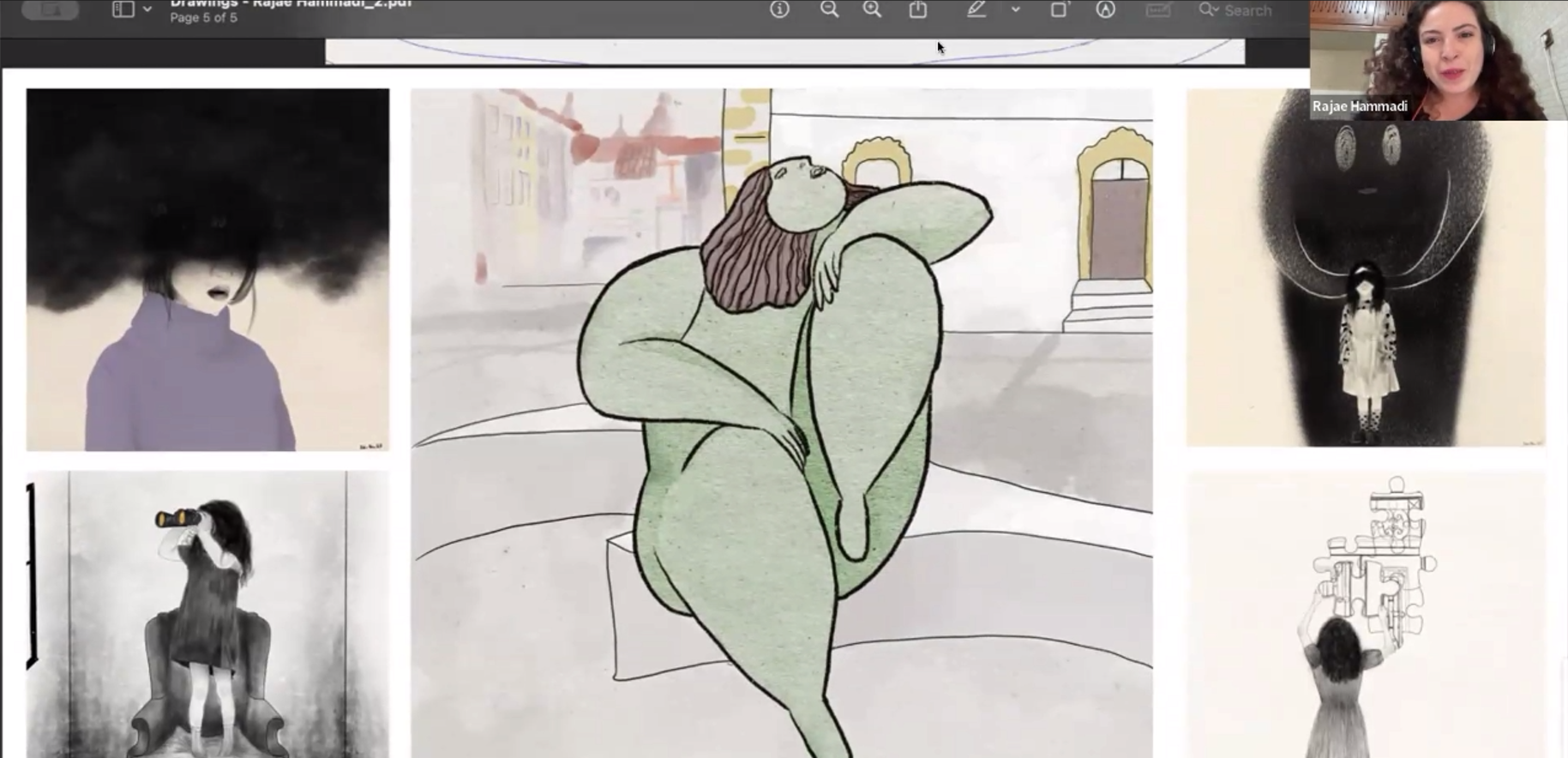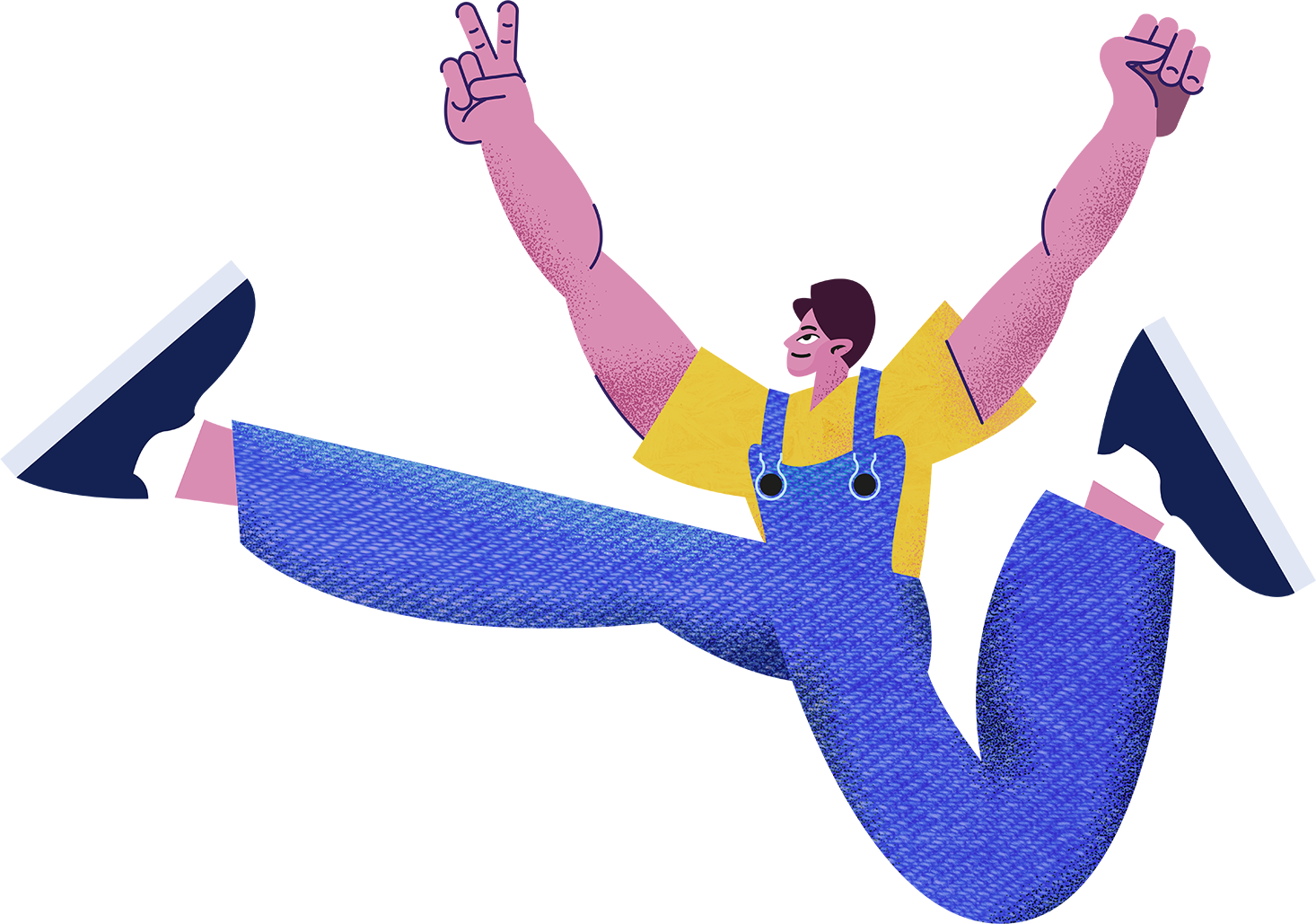Summary of the exchanges
Host: Laetitia EL HADDAD, Coordinator of the Jeunesses Med network, REF
Moderator: Chaden MOATAZ (Egypt)
Speakers: Safa Ben Brahim (Tunisia); Rajae HAMMADI (Morocco); Tamer TAFESH (Palestine); Sara BATHICHE (Lebanon)
Safa BEN BRAHIM (Tunisia) – artist and feminist and pro-minority activist
Safa spoke about her article " Football fans and freedom of expression in Tunisia " in the REF's Cahier n°8 and her work as a photo journalist. In this article, she collected the testimony of Omar, a 19-year-old fan who died on his way home from a football match after police officers told him to jump into a lake when he could not swim. Safa found it particularly difficult to share this testimony in Tunisia, but she was able to count on the support of the REF. As an amateur artist, it is very complicated for Safa to make a living from her art, just like for many other artists. This is why she also works as a program coordinator in the association for the fight against HIV in Tunis. Safa still tries to keep an artistic approach in her work and that's why she co-founded the " Gender equity art festival" which invites young people from the LGBTQ+ community to express themselves through art.
Rajae HAMMADI (Morocco) – illustrator and artistic director of the association Racines aispl
Rajae uses drawing and illustration to talk about social issues and human rights in general. She has produced a whole series of illustrations on gender-based violence in order to specify the different types of violence against women, because there is not only physical violence but also economic, psychological, institutional, etc. In her drawings and illustrations, she also addresses themes such as the condition of women, the non-emancipation of citizens, etc. Rajae has also made a series of illustrations on migration and forced displacement, in particular on the migratory journeys of migrants to an El Dorado strewn with obstacles and obstacles. In his personal drawings, Rajae likes to tackle subjects that take him back to childhood and explore boredom. For her, these subjects are vectors of creativity and creation.
Tamer TAFESH (Palestine) – theatre actor, member of the theatre campaign "Ashtar"
Palestinian art is very close to Arab art in the Middle East, although it has its specificities, which are both obstacles that artists face. Palestinian society is fraught with contradictions and is divided between the West Bank, Gaza and Palestine in 1948. Moreover, there is no land ready to welcome Palestinian art. That is, some issues cannot be addressed because they face a multitude of obstacles. The political situation is also a specificity and an obstacle: on the one hand, the Palestinian Authority and the Ministry of Culture only support certain artists. While others are assaulted and put in jail. On the other hand, there is the Israeli invasion: in Gaza there is a destruction not only of the people but also of artists (writers, theatre actors, poets, etc.). The same process can be seen in the West Bank, where two presidents of the Freedom Theatre are in prison and a large number of artists have been killed. Finally, the Palestinian Ministry of Culture is only interested in Palestinian tradition (e.g. the Dabke). However, it is essential to accompany progress because there are new things that transcend culture and tradition.
Sara BATHICHE (Lebanon) – circus artist, "Cirquenciel Liban "
Created in 2017, Cirquenciel is a circus school that welcomes students free of charge. Cirquenciel is part of the Arcenciel association, which works for people with physical and mental disabilities. Cirquenciel therefore offers these people circus classes adapted to their specific needs since people with disabilities are totally forgotten in Lebanon. Also, in Lebanon, as in many other Arab countries, there is no circus training, and it is this void that Cirquenciel fills. The association works particularly in the social sector and works in refugee camps, for example. After covid and the economic collapse of the country, the association almost closed. Although she still faces many obstacles, it is these obstacles that allow them to renew themselves, to have new ideas and to create.









